Windows 11/10 comes with some pre-installed Store apps. This article will guide you on how to prevent or stop the installation, reinstallation, or updating of unwanted Microsoft Store apps and advertisements of these apps.
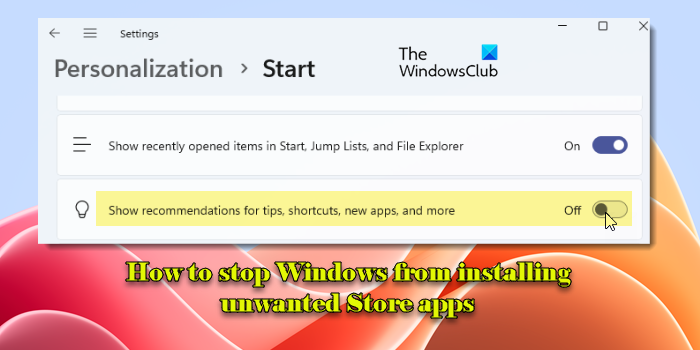
Microsoft released Windows as a Service. So with this concept, Microsoft stands at a place where it can deliver promotional offers, services, apps, and other components freely. This is the concept that made Windows 11/10 initially free for consumers and, at the same time, helped Microsoft make some money out of it.
In 2015, Microsoft revealed that they had signed a deal with King, who is a developer for Candy Crush games. With the help of such a deal, King’s apps like Candy Crush Saga and later Candy Crush Soda Saga were distributed to users built-in with the OOBE (Out of box experience) on Windows 11/10. As Microsoft is iterating forward with the newer releases of Windows 11/10 feature updates, we are getting to see more and more apps being promoted on the Windows 11/10 start menu. UWP apps like Twitter, Photoshop, 3D Builder, Microsoft Solitaire Collection, etc. have started to come pre-installed with Windows.
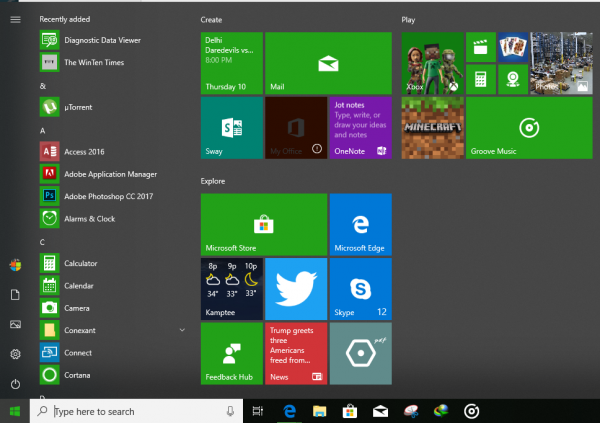
Users on online communities have reported that these pre-installed bloatware apps take up to 750 MB of storage on the hard disk partition where it is installed. It usually takes up the OS partition which is again usually the Local Disk C partition. These apps are fetched automatically with an updated version from the Microsoft Store without the user’s consent and happen in the background. However, this download progress can be seen in the Downloads and Updates section of the Microsoft Store. A majority of the users end up not noticing it. But this is not the case for everyone.
If you get Windows 11/10 on the LTS Channel (Long Term Servicing Channel) which is usually for Enterprise customers, you do not see these pre-installed bloatware apps or if you use Windows 11/10 Pro for Workstations edition, you do not get this pre-installed bloatware either. Although you can just buy Windows 11/10 Pro for the Workstation edition, it costs much more than the other consumer-focused editions.
There was a Group Policy hack to prevent the installation of these bloatware apps but in Windows 10 v1607, this option was removed. However, this does not mean that we can not do anything about this. With the removal of all these old options, we are left with the usage of some modifications of Settings inside of Windows 11/10.
Stop Windows 11/10 from installing unwanted Apps
First of all, you need to stop Windows 11/10 by giving you suggestions for different apps and services.
For this, start by opening the Settings app from the Start Menu or by hitting the Win Key + I combination.
Then click on the menu called Personalize.
And then finally click on the option called Start in the side menu on the left.
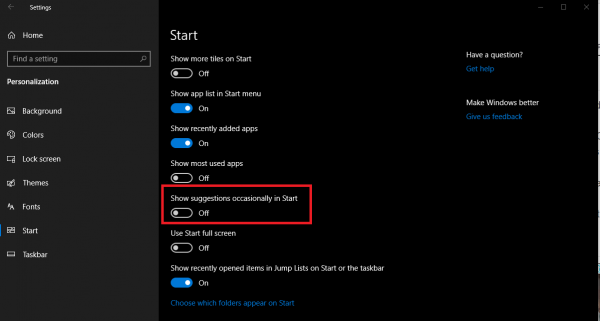
On the right-side panel, there will be a toggle for Show suggestions occasionally in Start. You will have to turn it Off. In Windows 11, the option is named ‘Show recommendations for tips, shortcuts, new apps, and more‘.
Now, Windows 11/10 will stop suggesting different apps and services.
Next, you will need to stop their downloads in the background as well.
For this, begin with going into the Microsoft Store.
Click on the menu on the right top corner denoted by three dots.
Then click on Settings.
There will be a toggle labeled App updates (Update apps automatically). You will have to turn it Off.
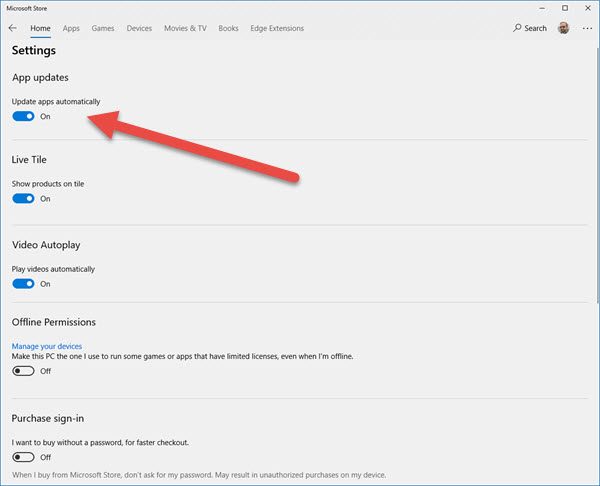
This will prevent the background installation of these pre-installed bloatware apps on your Windows 11/10 machine.
Additionally, if you want to see no app suggestions at all, you can try disabling the Video Autoplay feature in the settings of the Microsoft Store.
There is also a Windows Registry tweak that will help you.
Run regedit and navigate to the following key:
HKEY_CURRENT_USER\Software\Microsoft\Windows\CurrentVersion\ContentDeliveryManager
Create a new DWORD value here and name it SilentInstalledAppsEnabled. Give it a value of 0 to disable app installs. A value of 1 will enable app installs.
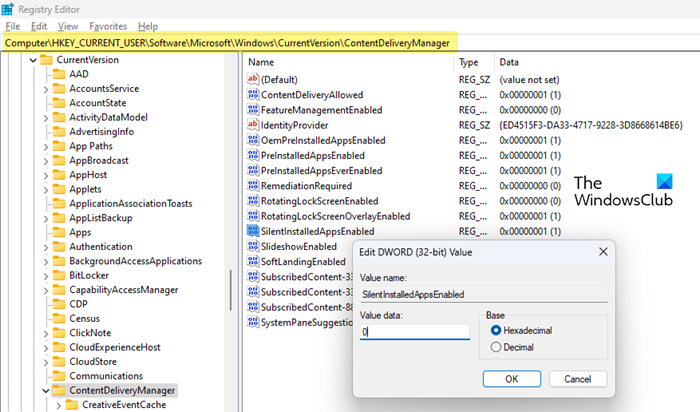
Incidentally, O&O ShutUp10 will also let you do it easily.
I suppose that by following the above instructions, you will probably make your Windows 11/10 computer free from these annoying advertisements and the unauthorized installation of pre-installed bloatware apps.
See this post if you are interested in uninstalling Windows app addons.
How do I turn off unnecessary apps in Windows?
To turn off unnecessary apps on your Windows 11/10 PC, you may use several methods. If the app is set to launch automatically when your computer starts, it can be disabled using the Task Manager. If it is a built-in app, you may use PowerShell to uninstall the app, otherwise, you may simply uninstall unwanted apps directly from the Settings screen. You may also disable apps that run in the background and consume system resources. Some third-party tools such as CCleaner also help you manage and disable unnecessary apps and services in Windows.
How do I block unwanted Apps on Windows?
You may block Potentially Unwanted Apps (PUAs) using Windows Security. The tool offers a dedicated feature to block the installation and operation of apps that might be unwanted or potentially harmful to your Windows 11/10 PC. The feature is available as a toggle named ‘Potentially unwanted app blocking’ that can be turned on and off. Another similar toggle named ‘Controlled folder access’ prevents unauthorized applications from making changes to protected folders, effectively blocking unwanted apps from making changes to your system.
Read Next: How to remove apps from the Microsoft Store Library.
Leave a Reply